Coral bells offer beautiful shades of contrasting foliage to the garden space. The clumping form allows you to tuck the plants into any space in the garden where you want that pop of colour. Learn how to grow Coral bells, also known as Heuchera, and add these wonderful mounding flowering plants to your garden.

What Are Coral Bells
Coral bells" is the common name for Heuchera, a herbaceous perennial plant valued for it's colourful and beautiful foliage. This plant can be evergreen in warmer locations.
Heuchera is from the Family Saxifragaceae, and belongs to the Genus Heuchera. There are over thirty species within this genus.
Many Coral bell cultivars that we grow in our gardens are hybrids.
Coral bells like a shady spot, and do very well in a woodland setting. They are great companions for hosta and astilbe, as they prefer the same growing locations.
The plants come in a variety of foliage colours, including green, yellow, orange, red, maroon, silvers, browns, and even blacks.
The plants produce flower spikes with tiny bell shaped blooms throughout the growing season. The foliage itself generally outperforms the blooms, although the airy spikes make a nice contrast to the display.
There are many different cultivars of Coral bells in recent years, and there is quite a bit of diversity in the colourful foliage, flowering, and foliage shapes and sizes.
Coral bells are a great option for any garden beds, as long as they are not planted directly in the full hot sunlight in warmer climates.
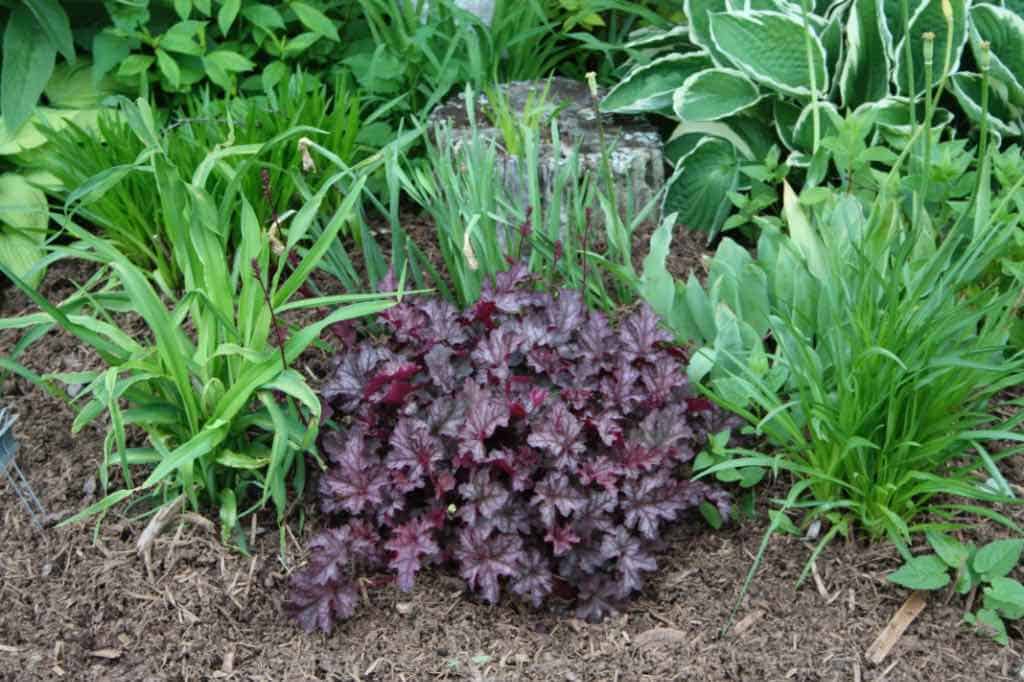
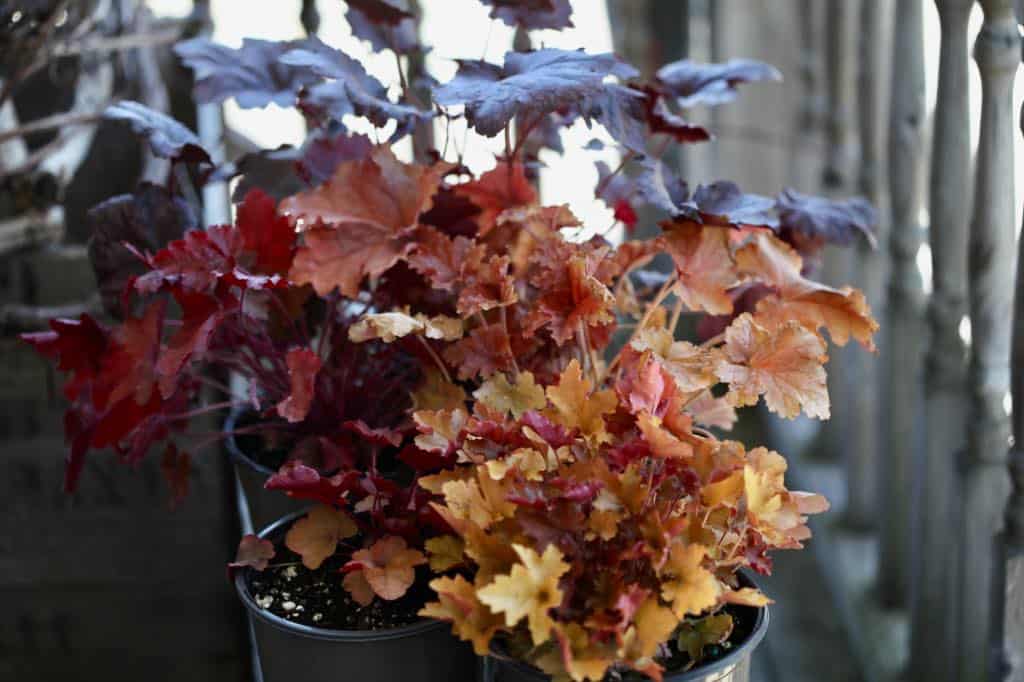
Coral Bell Flowers
- In summer, Coral bells produce many tiny, bell shaped, pink or white flowers along a spiky flower head.
- The flowers continue to bloom from mid summer through until fall.
- All varieties of Coral bells will bloom, although some blooms may not have striking or attractive flowers, or may not be showy.
- The tiny blooms may even be considered insignificant to some, somewhat like hosta blooms can be. Hosta is another plant that is mostly valued for it's beautiful foliage.
- Not all Coral bells are "coral" colored either, as their name suggests. The flower colors vary from shades of coral to shades of pink, white, and cream.
- If you appreciate the blooms like I do, or have a variety with more showy pink flowers, you will be glad to know that Coral bells are also great as cut flowers.
- The blooms will last for a long time in the vase, lasting up to two weeks or more.
- The flowers are also great for the pollinators, and will attract bees and other beneficial insects to the garden.
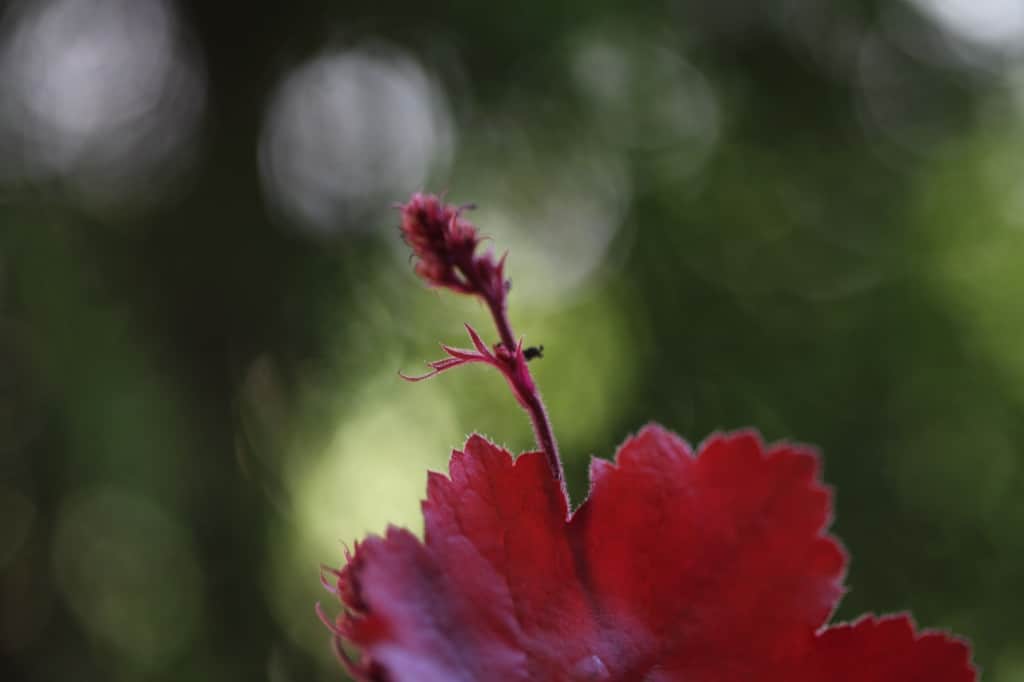
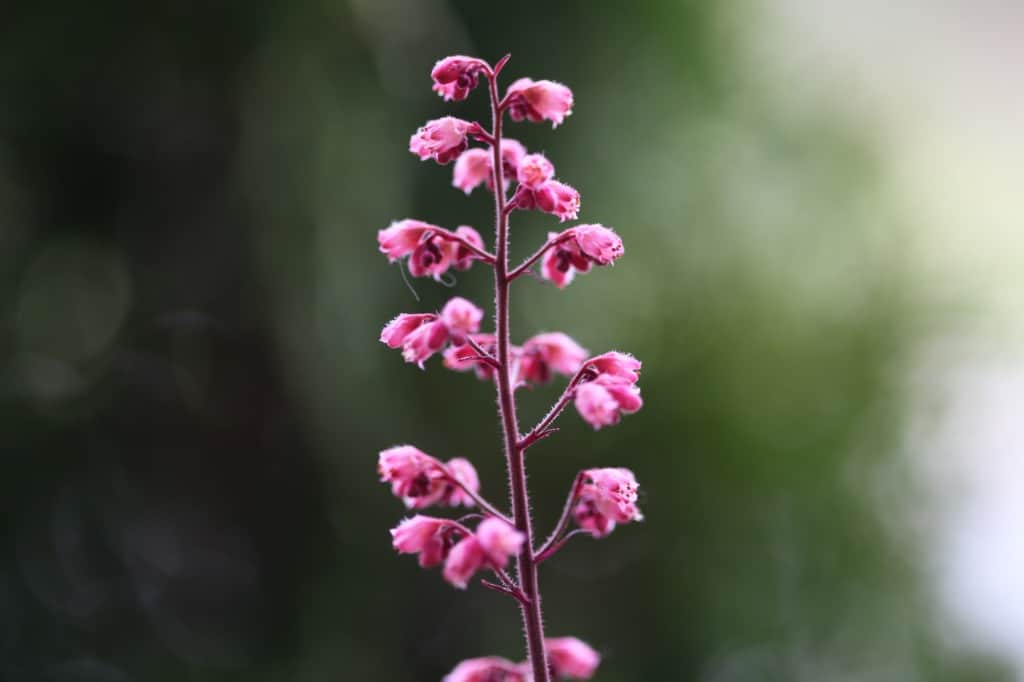
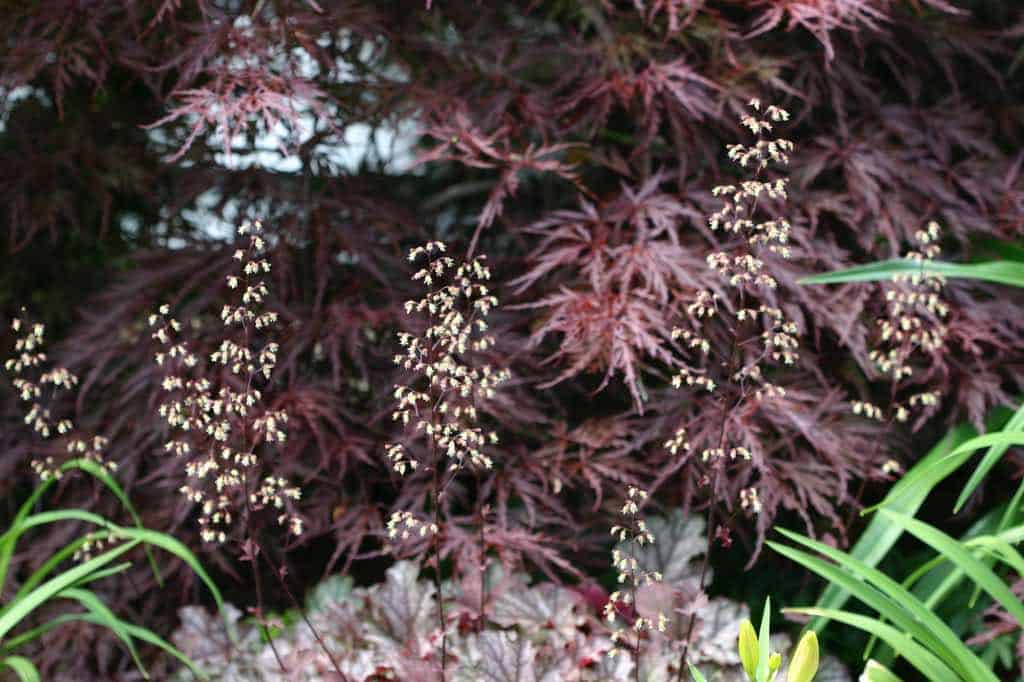
Coral Bell Foliage
- The foliage of Coral bell plants can be quite varied in presentation, depending on the varieties.
- Foliage can have scalloped or heart shaped edging, and have a glossy or fuzzy surface. Some varieties have veining on the leaves, and others have mottling or blotching coloration.
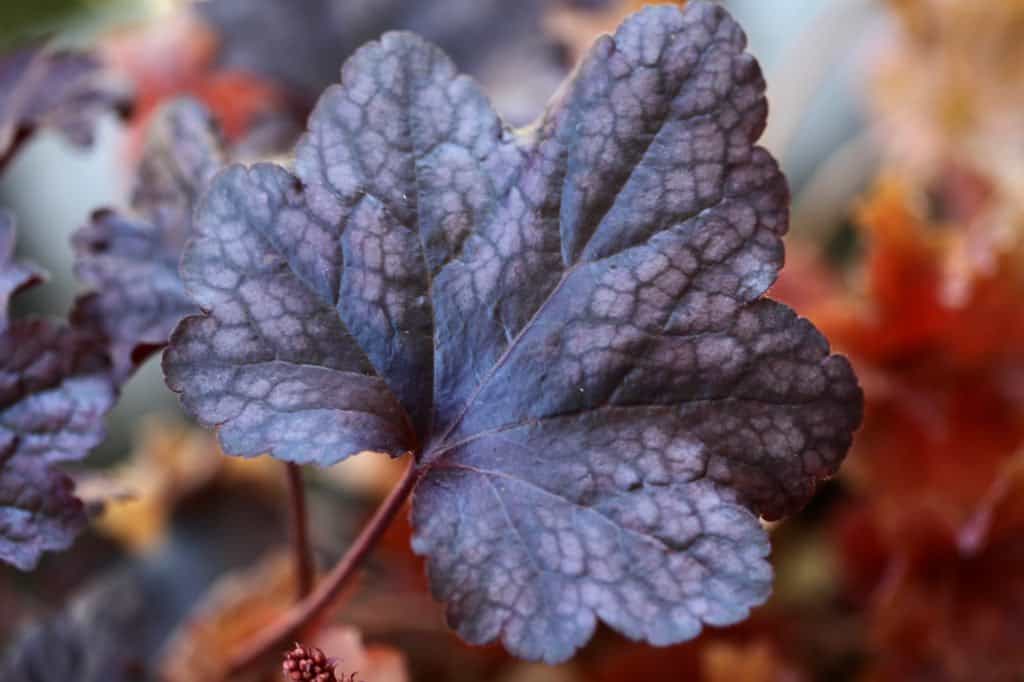
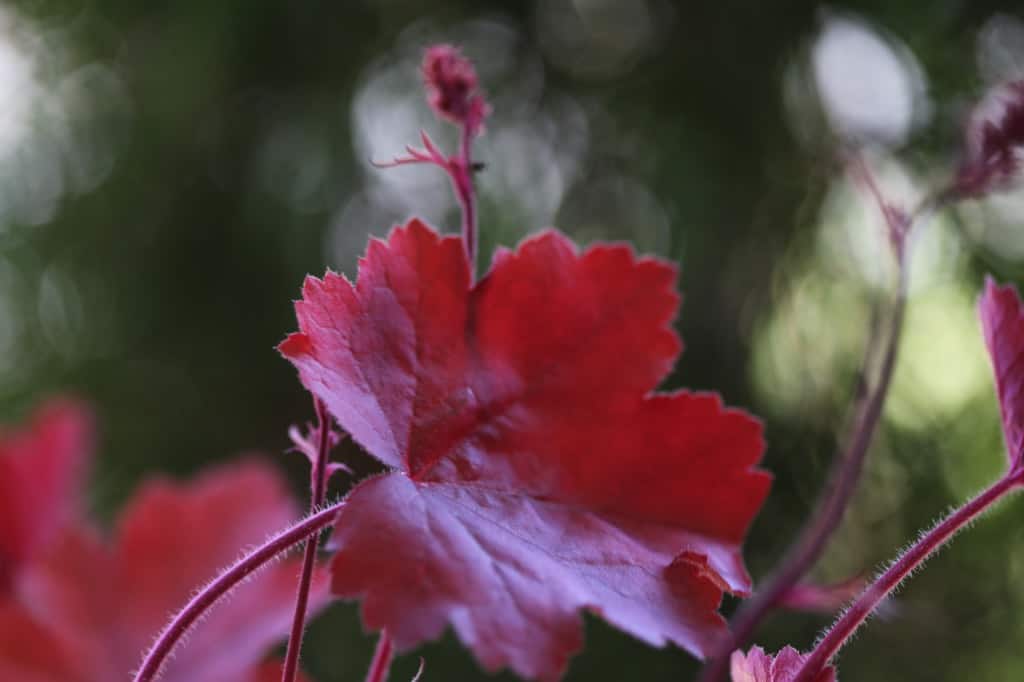
- The leaves will have different sizing depending on the cultivar, and some leaves are much larger than others.
- Colouring of the leaves is cultivar dependent, and is so varied that just the Coral bell foliage itself can resemble a rainbow of colour in the garden.
- The lighter the foliage color on Coral bells, the more burn potential. For example, the yellows usually need more shade to look their best.
- The darker the foliage of Coral bells, the more sun they can tolerate, so these varieties could be planted in a sunnier spot.
- Just out of interest, if you have a deer issue in your garden, plant the Coral bells with fuzzy foliage. It is more of a deer deterrent and is more deer resistant than the glossier leaves.

Coral Bell Seeds
- Coral bell seeds are very tiny. They look like little black pieces of dust with the naked eye.
- Up close they are black, shiny and oval shaped.
- The seeds measure approximately 0.10 cm in length.
- The plant will produce seeds which are mature and viable if the seed pods are left on the plant until they are mature and dry.
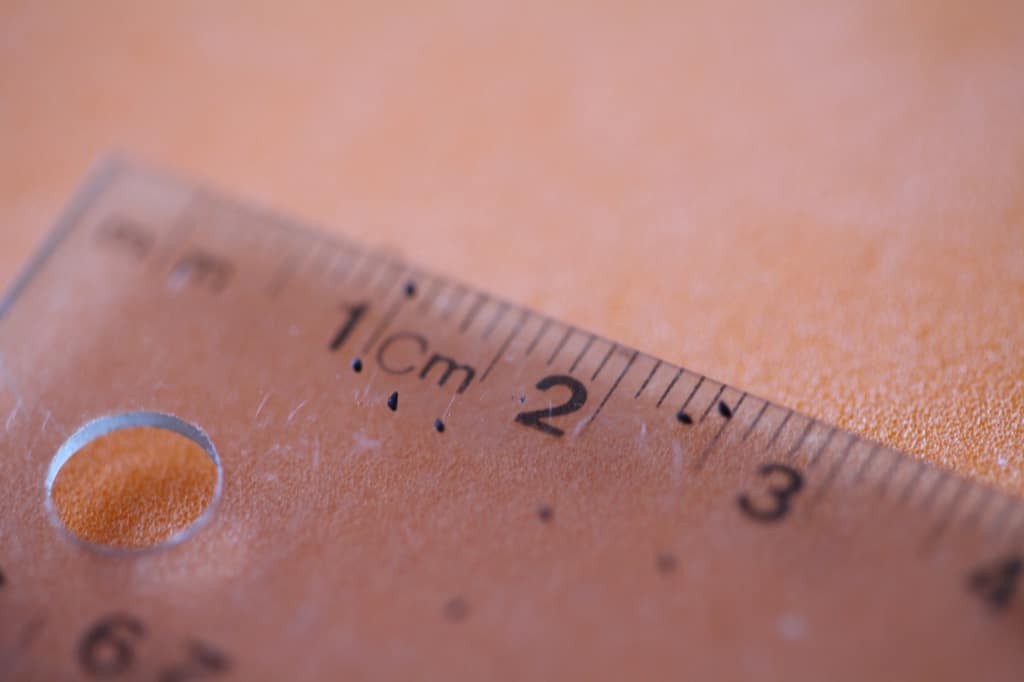
Are Coral Bells Easy To Grow?
Coral bells are easy to grow and care for.
These attractive foliage plants are mostly grown for the wonderful contrasting colors that they add to the garden.
The flowers are so tiny that sometimes they may go unnoticed, although the spikes of tiny flowers certainly add a light and airy effect to the plant when in full bloom.
These days there are many different cultivars of coral bells found at garden centres. Now more than ever it seems, there is an increasing selection to choose from every year.
This shows increasing popularity of the plant, and a well deserved nod to this easy to grow perennial.
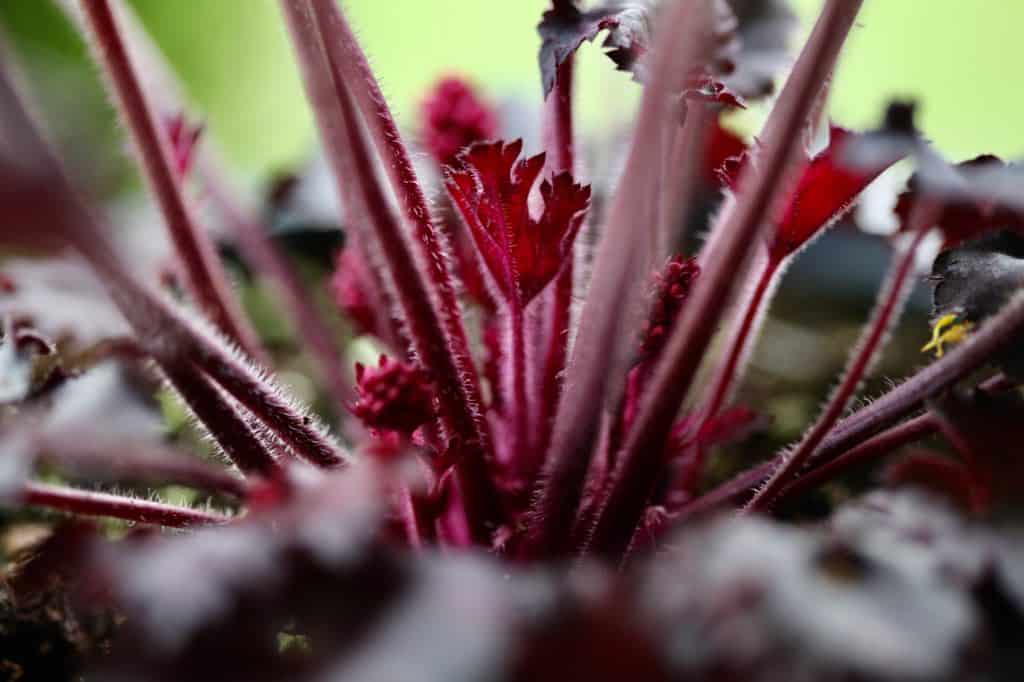
How To Grow Coral Bells
Coral bells can be started from seed, division, or cuttings.
Be aware that some Coral bell cultivars are patented, and you will not be able to propagate patented plants for trade or sale without special permission and paperwork from the patent holder.
If starting plants for your own use, it is best to propagate from plants that are not patented.
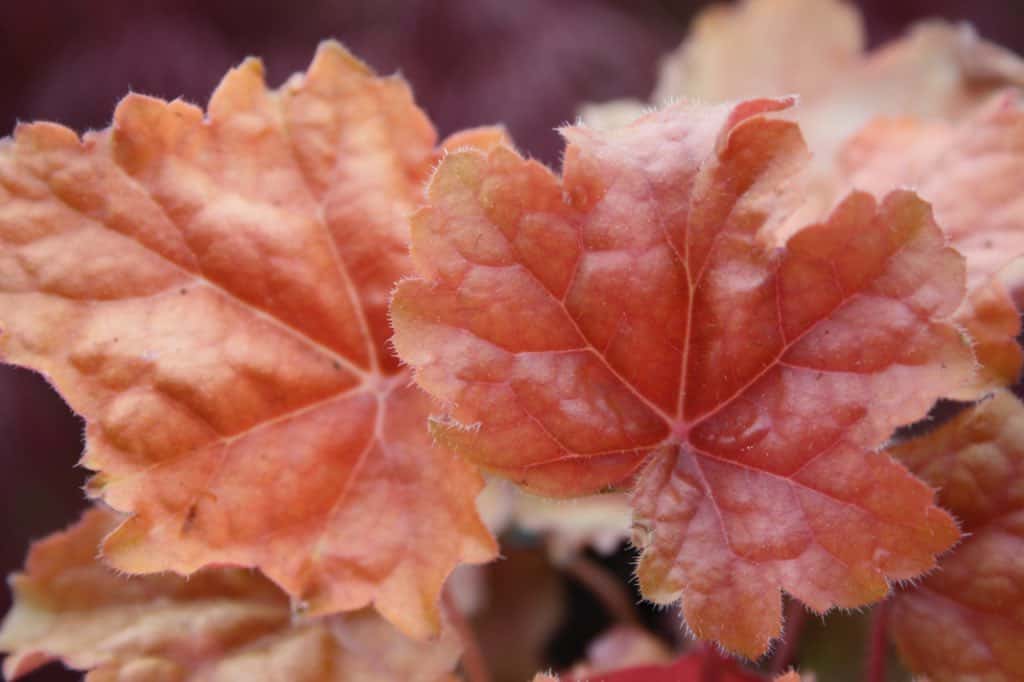
Growing Coral Bells From Seed
Can Coral Bells Be Grown From Seed?
Yes Coral bells can easily be grown from seed, although it will take several years to have a mature sized plant, as is the case with most herbaceous perennials grown from seed.
The seedlings will be hybrids, and may not look like the parent plant, especially if you have a variety of Coral bell cultivars in your garden.
It's always fun and exciting to harvest and grow seeds from your garden, and you never know exactly what you will get until the plant becomes mature.
Growing Coral bells from seeds indoors is a great way to give the tiny seedlings a head start and get them ready early for the garden. Plant the seeds about six to eight weeks before the last frost date in your USDA plant hardiness zone.
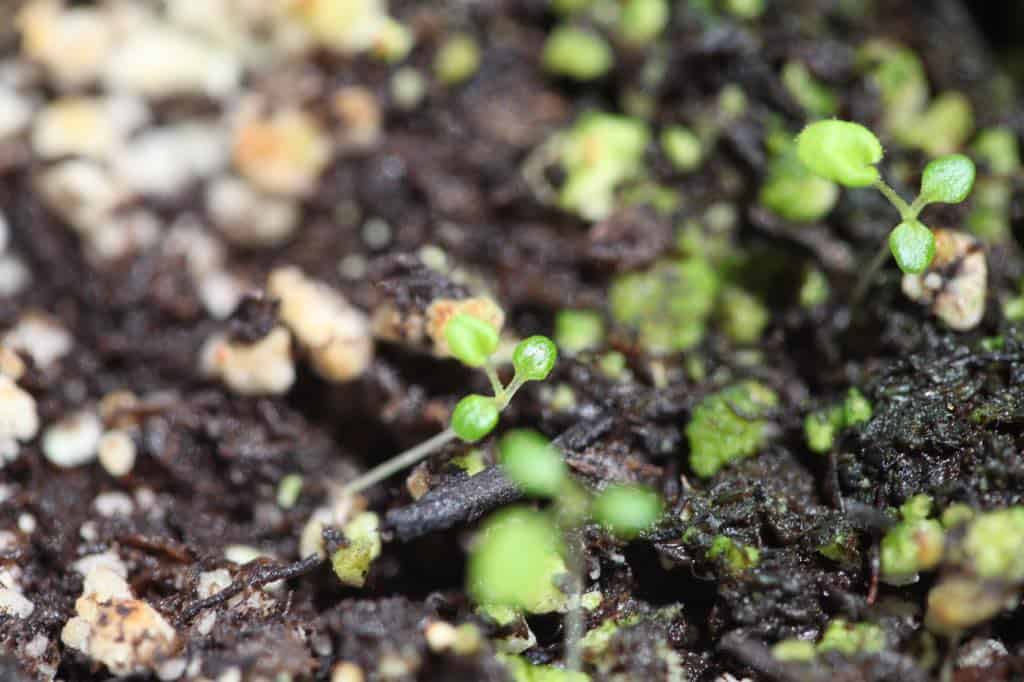
Starting Coral Bells From Seed
- Coral bell seeds are some of the tiniest I have ever encountered.
- I found them easiest to work with by getting them onto my fingertip and then sprinkling them onto the surface of a pre-moistened seed starting mix, in a container or seed tray.
- Coral bell seeds require light to germinate, so do not cover the seeds.
- I covered the container with a clear plastic bag to help retain moisture in the container, which worked very well.
- Place the container on a heat mat until germination is complete. Make sure that the soil does not dry out during this time.
- Once the seedlings have sprouted, open up the plastic to allow air flow.
- To water, either bottom water or mist, until the seedlings become a bit larger and are able to tolerate overhead watering.
- Place under lights until ready to be planted out in spring, after all chance of frost has passed.
- Harden off the seedlings before planting them out into the garden, to acclimatize them safely to the outdoor elements.
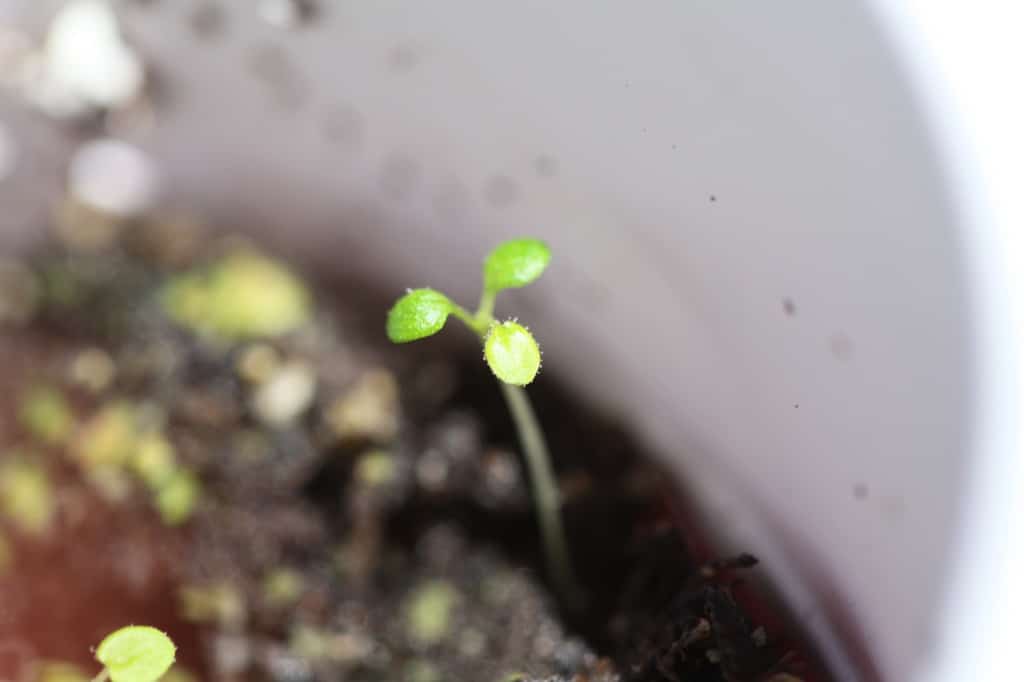
How Long Does It Take For Coral Bells To Grow?
- Coral bells grown from seed can take approximately 2 to 4 weeks to germinate.
- Then it will likely take another two to three years to achieve maturity.
- It is however, well worth the wait.
Growing Coral Bells From Division
Coral bells are easy to divide, and it is probably the easiest way to propagate this plant.
In fact when I first started growing Coral bells in my garden I would divide the plants in two as soon as I brought them home from the garden center, right out of the pot, to make more plants for the garden.
I would not recommend this however, as it's best to wait until the plants are a bit bigger before you divide.
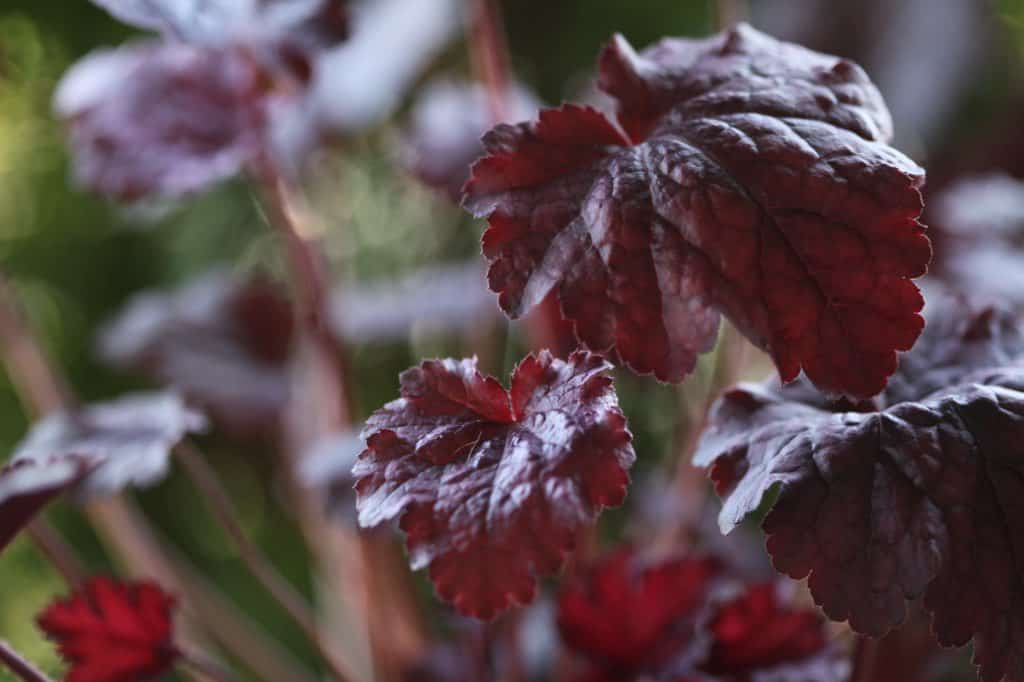
How To Divide Coral Bells
- Divide Coral bells in springtime in cooler climates, and spring or fall in warmer locations.
- Generally every three to four years is a good time to divide.
- To divide a clump of Coral bells from your garden, divide when you find the plant getting large or forming a bald spot in the centre of the clump.
- Dig around the plant with a sharp spade, and lift it from the planting hole.
- Divide the plant into pieces by using a sharp clean knife or tool to cut through the plant.
- You can also remove the soil from the root ball to see exactly what you have to work with, and break the clump up ensuring that you have roots on every piece that you have separated from the clump.
- Replant the new divisions, maintaining the same soil level as in the planting hole originally. It's important to plant the crown of the plant at the same level, and not too deeply.
- The plants look great when planted en masse. When dividing and replanting, try to plant in uneven numbered groupings for a natural look.
- Plant in groups of three or five plants together for a great visual impact in the garden.
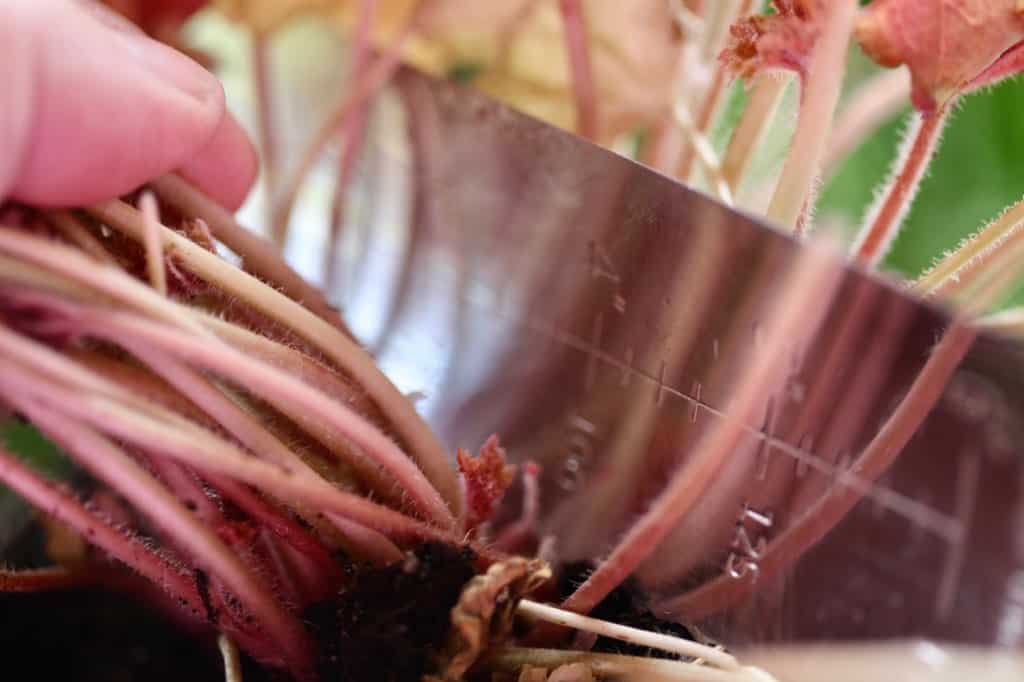

Growing Coral Bells From Cuttings
Sometimes when you are dividing up your clump of Coral bells, parts of stems may be accidentally sliced off without roots.
Do not toss these away!
These stem pieces can easily be rooted as cuttings.
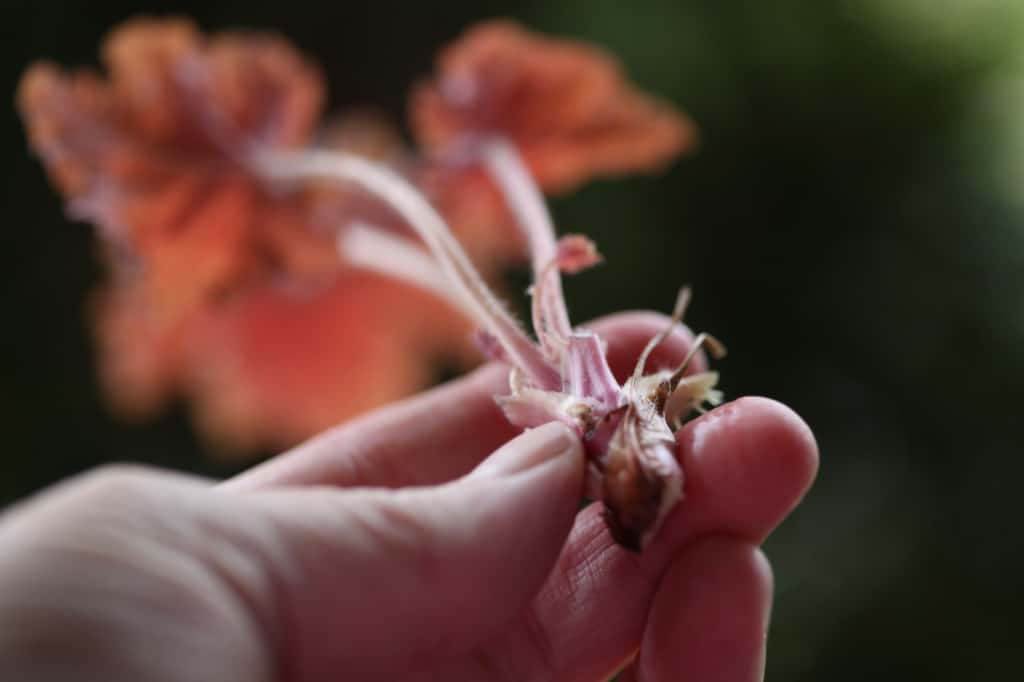
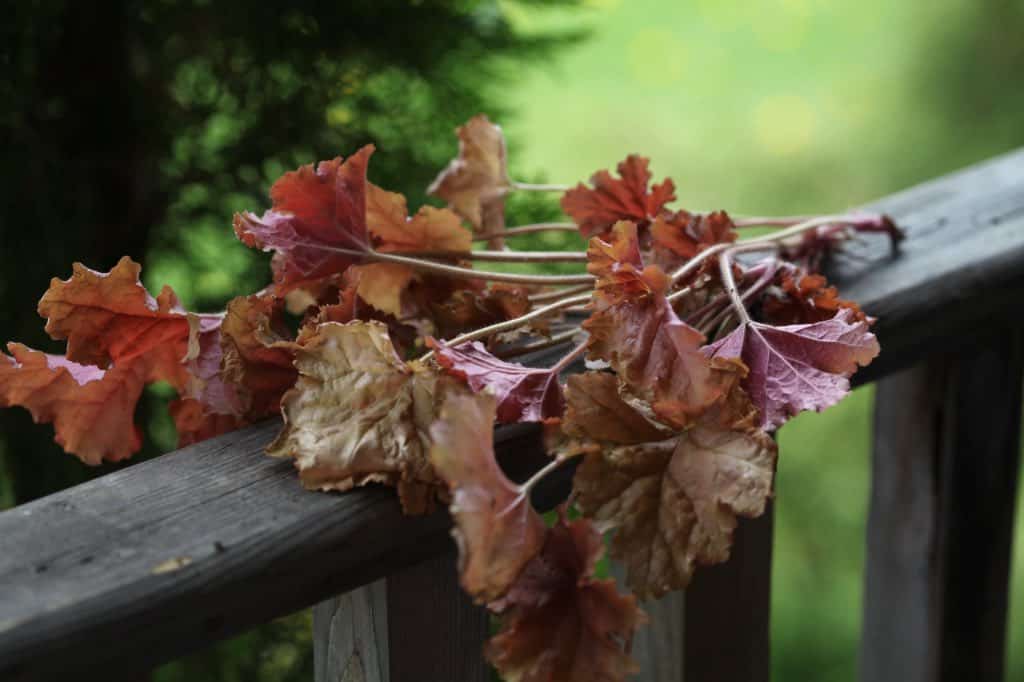
As well, you may not want to lift and divide your Coral bells, but rather just propagate from cuttings.
A good time to take cuttings from your established Coral bell plant is when you notice that the plant has woody and tall stems.
You can take some of these stems and propagate new plants, and as well at the same time give the original plant a good pruning.

So let's have a look at how to propagate from cuttings.
How to Propagate Coral Bells From Cuttings
- Choose a plant to take cuttings from.
- If you already have some stems left over from a plant division which have no roots, be sure to do this same process with these stems as well.
- Cut from the woody stem of the Coral bell plant, cutting down on the stem several inches. Be sure to leave a piece of the stem remaining on the plant, along with some fresh growth.
- You need some of the stem on the cutting, along with some leaves, for the plant to take root.
- Place the cuttings in a container of water until you are ready to plant them.
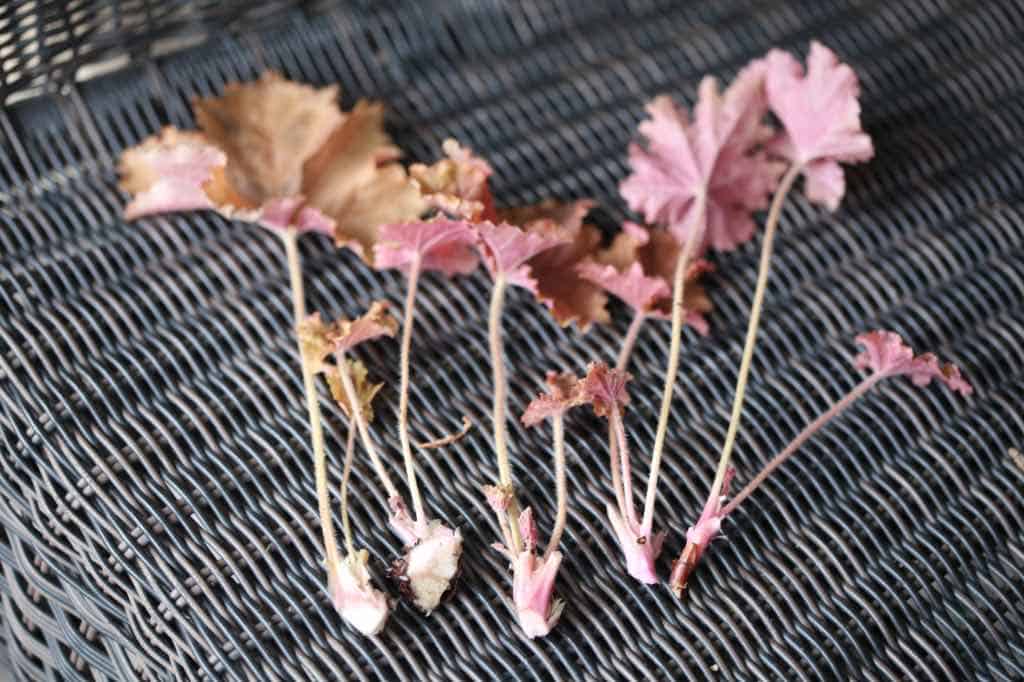
- Trim off the extra leaves on each cutting to prevent transpiration, leaving just several leaves on each cutting.
- There is no need to use rooting hormone, although you can use it if you wish.
- Plant the cutting into a good sterile soil mix which has been moistened. Firm the soil down around the newly planted cutting.
- Water the cutting in.
- Keep the soil moist while the plant is rooting. This is very important.

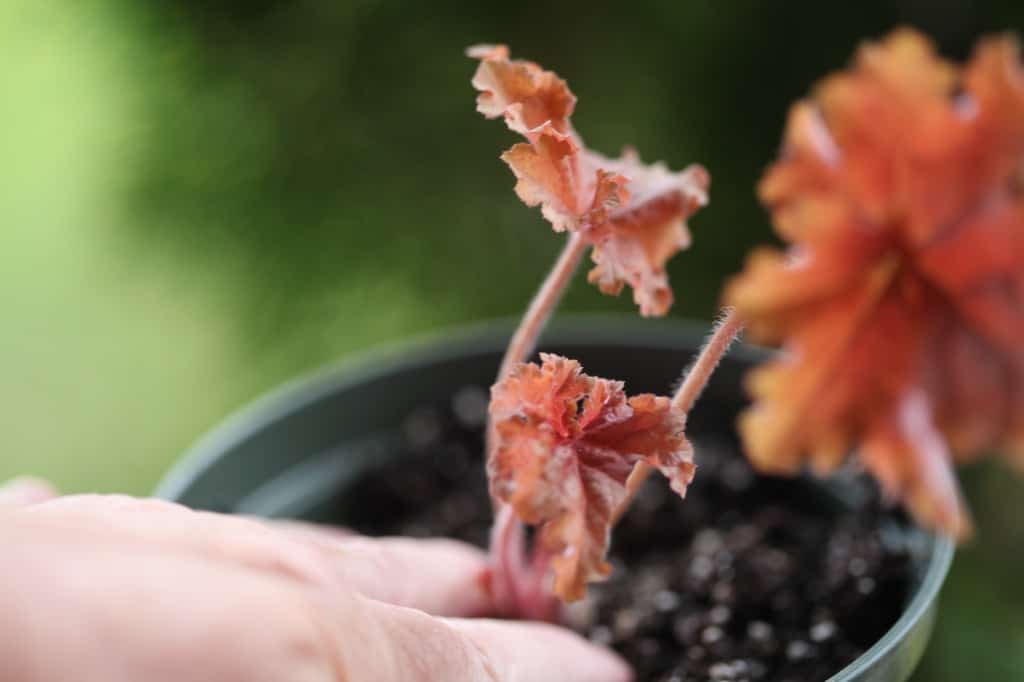
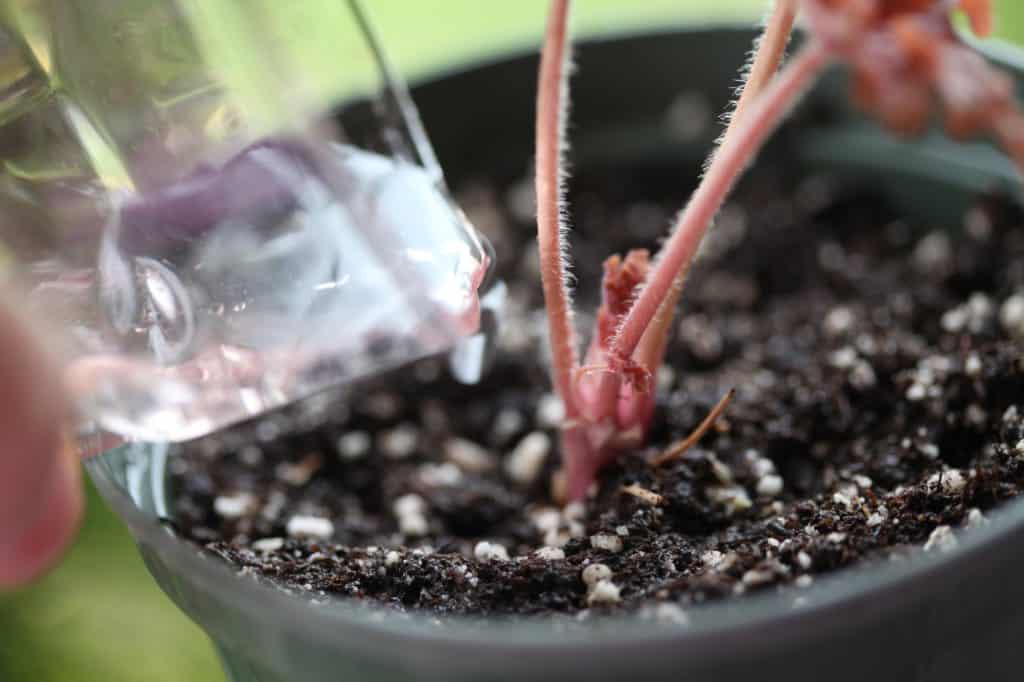
- Cuttings do best in spring when the weather is warm, as this encourages root growth.
- If it is not warm, keep your cuttings in a warm and bright location until roots have formed, within about a month or two.
- Once the cuttings have rooted, they can then be hardened off and transplanted out into the garden.
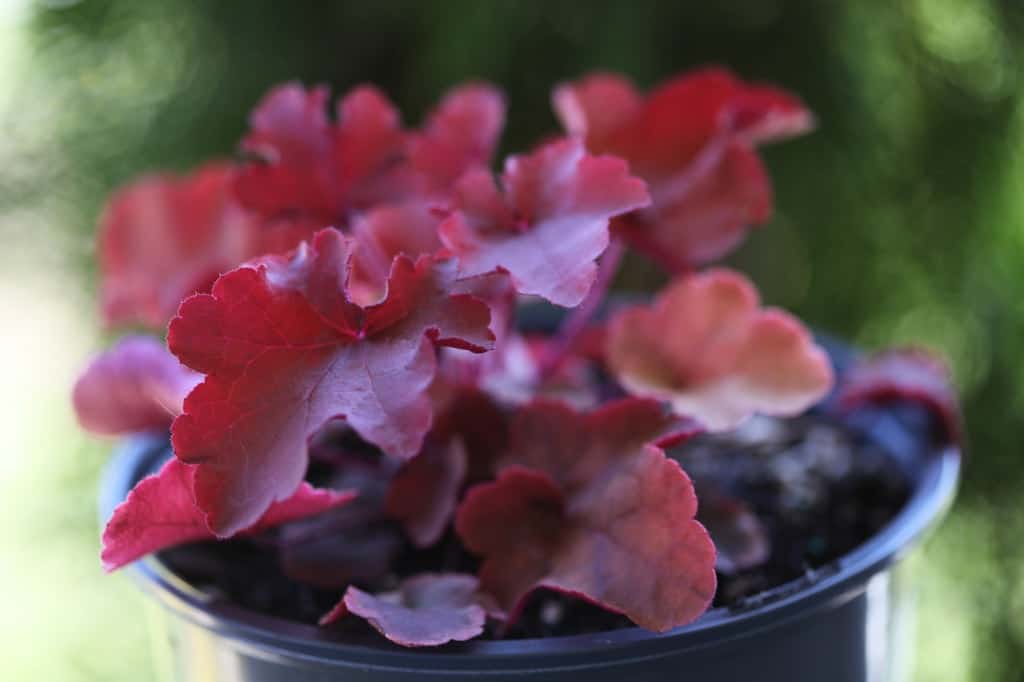
How To Plant Coral Bells
If you have planted Coral bells from seed, allow the tiny seedlings to reach a good size before planting them out into the garden.
Make sure to harden off the small plants before planting them out, so that they will be well acclimatized to the garden as they settle in to grow.
If you are planting more mature plants, planting is very easy and straightforward.
Plant Coral bells in spring in cooler climates, and spring or fall in warmer climates.
In our cooler zone 5b garden, we tend to do mostly spring plantings. The reason for this is to allow lots of time for the plant to get established in the garden, and to develop a good root system before the fall frost sets in.
Fall and winter frosts sometimes heave plants out of the soil if planted too late in the season.

How Far Apart To Plant Coral Bells
Planting space will vary, depending on the variety of Coral bells that you are planting. Some varieties are larger than others.
Generally, spacing the plants one to two feet apart will work well, and allows the plants some room to grow and spread.
Planting Coral Bells
Plant into a hole that is slightly larger than the pot in which the plant is growing. This will allow you to add some amendments to the soil at the time of planting, and also allow some space for the plant to grow.
When planting, ensure that the plant is at the same soil level as it was in the original pot. Firm the soil around the plant, and water in thoroughly.
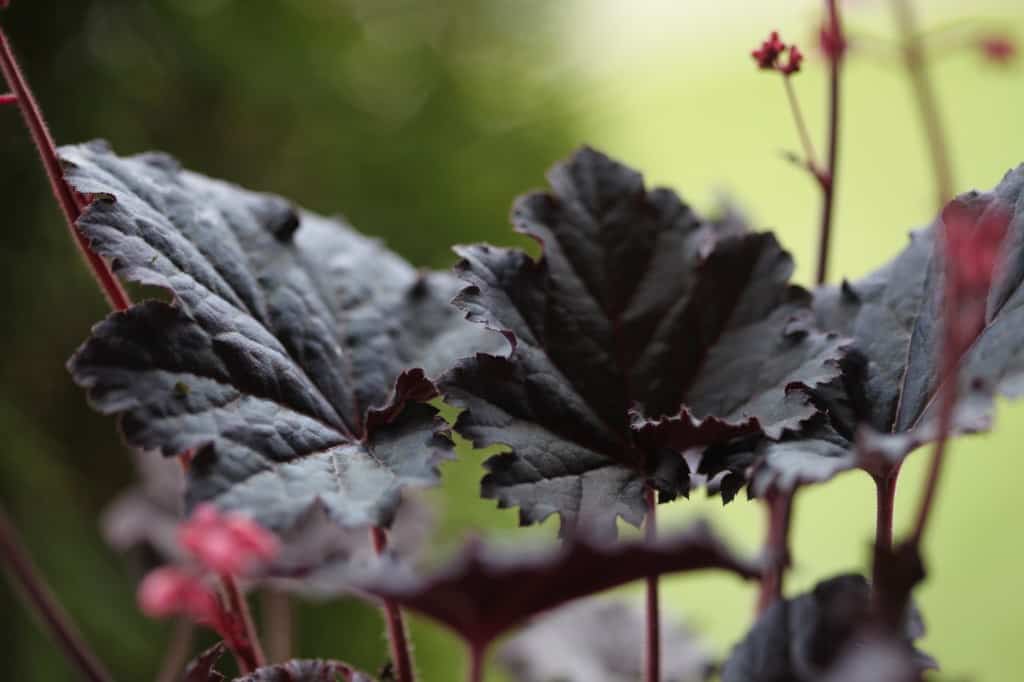
Coral Bell Care
Coral bells do not require a lot of extra care once they are planted into the garden.
Let's have a look at some of the care requirements for these colorful plants.
Hardiness Zones
- Coral bells grow best in usda hardiness zones 4 to 9.
Soil Requirements
- Coral bells do well in a humus-rich soil that is full of organic matter. You can plant into clay, but make sure that the clay soil is well amended.
- Plant Coral bells into a well drained soil. Although they do like a moist soil, they do not like wet feet, so make sure that they have good drainage.
- This is one of the reasons that these plants do not do so well in straight clay soils, as clay sometimes can get waterlogged.
- Coral bells do best in soil with a neutral ph. Try to avoid planting for instance underneath pine trees, which will often release needles and create an acidic soil environment.
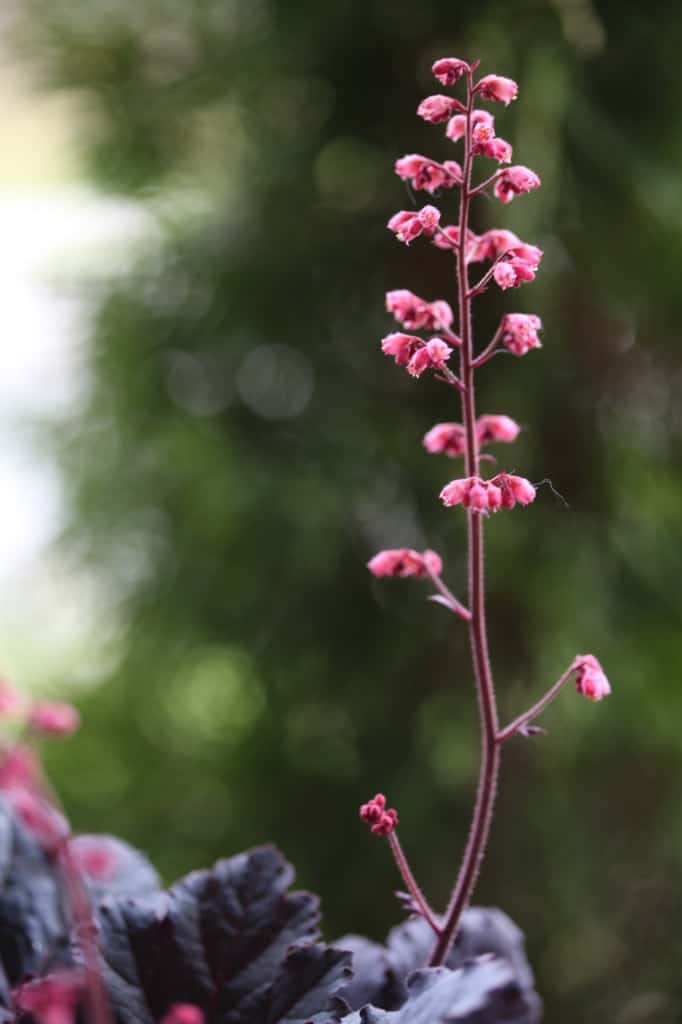
Light Requirements
- Coral bells can be planted in a variety of light situations, and in fact do best with some sun for blooming. Morning sun is the best sun for these plants, as it is less intense.
- Although they can be planted in a sunny location in cooler climates, the plants do best in a partial shade location. They can also grow well in shade gardens and in full shade.
- Keep out of full sun in warmer climates, as the hot afternoon sun will likely cause some burning and scorching of the foliage.
- The lighter leaved varieties will do best in a shadier area, as the leaves of these plants are more vulnerable to sunburn and scorching, especially in warmer climates.
- Coral bells are very resilient, and are fairly tough plants. If you find that they are not doing so well in one location due to the lighting, just dig them up and transplant them to a more suitable spot.
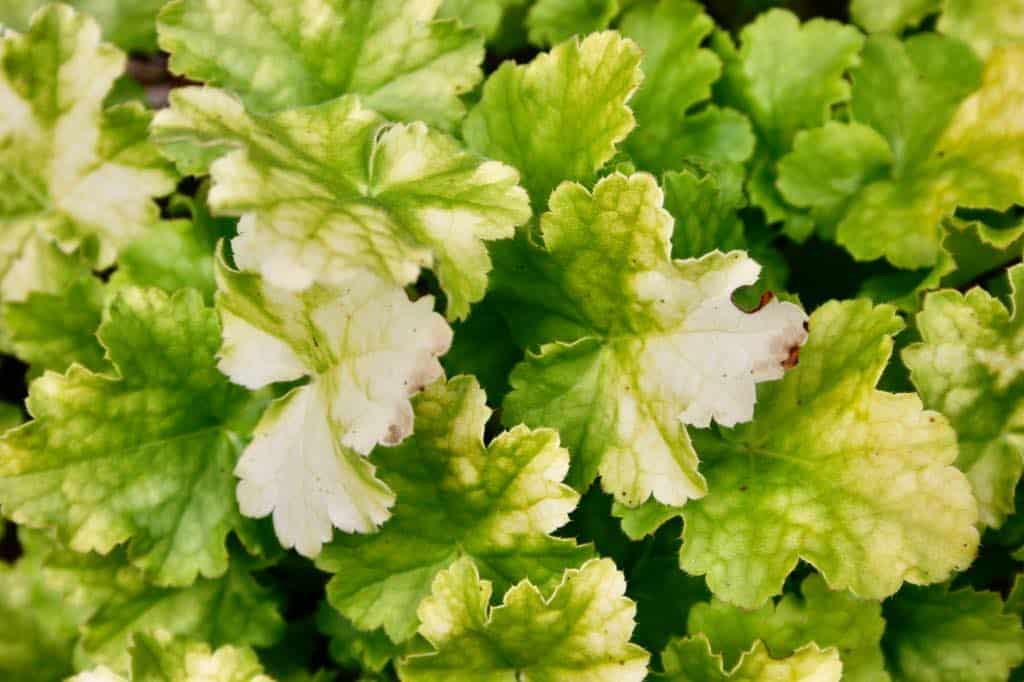
Water Requirements
- Water thoroughly after planting, and then as needed. Generally, you can mostly allow the natural elements to take care of the moisture requirements.
- The plants will benefit from extra water during periods of drought, when they are receiving less than an inch of water a week.
Mulching
- In spring you may notice old dead foliage from the previous season. Just remove the dead parts, and mulch around the plant, preparing it for the season.
- Apply a nice thick layer of mulch to the soil around the plant. You can also use a half-inch layer of compost to add organic matter to the soil.
- Mulching will help to retain moisture in the soil, as well as help to prevent weed formation.
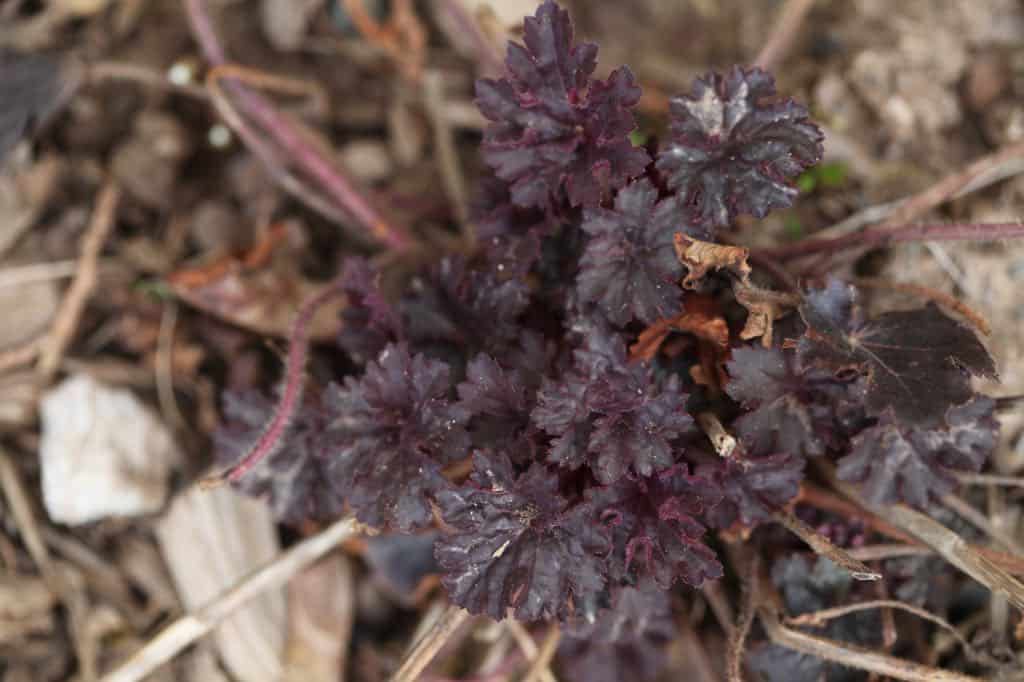
Deadheading Coral Bells
- Deadhead the flower stems after blooming.
- Deadheading will help to conserve some of the plants energy into producing more flowers, rather than going into seed production.
Can You Grow Coral Bells In Containers?
Coral bells can be grown in containers, as long as the containers are large enough to accommodate the root balls.
In fact, Coral bells look quite beautiful planted together as container plants, in an urn or in a pot on the deck or porch. The colorful foliage is striking in a display, especially if you are planting a number of different colors together in one container.
Just make sure to get the potted plants into the ground in fall, rather than leaving them in the pot over winter, especially in colder climates. This will help them to survive the winter.
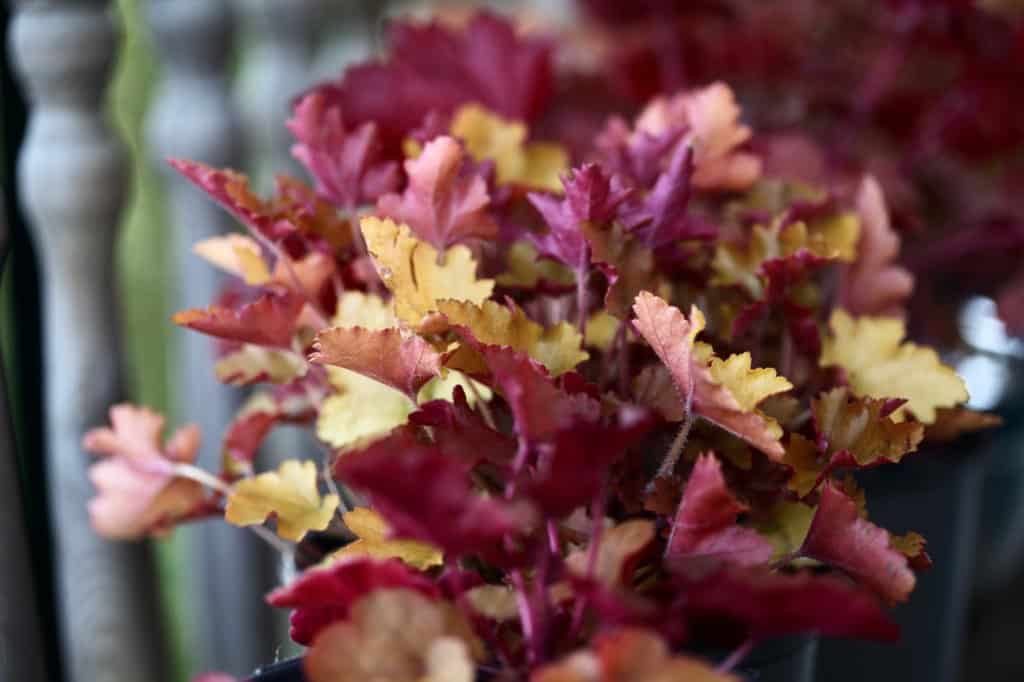
Conclusion
Coral bells are wonderful perennial plants to grow in the garden, and are a good choice for a shade garden.
If planted in the right location, they should return readily year after year.
Plant these low maintenance plants in rock gardens, as ground covers, along steep banks, or in the shade garden en masse all on their own.
Coral bells are very compatible with hostas as companion plants, as they grow well together in the same growing conditions and shady locations.
Although the plants are grown primarily for their foliage colors, you can also enjoy the flowers as well. Try them in a vase, as they are quite long lasting.
The foliage of Coral bells can range so widely between the different varieties, that when multiple varieties are planted together, they can present with a rainbow of colors , with just the foliage alone.
Coral bells are one of my favourite low maintenance foliage plants to grow, and every year I find new varieties to grow in the garden.
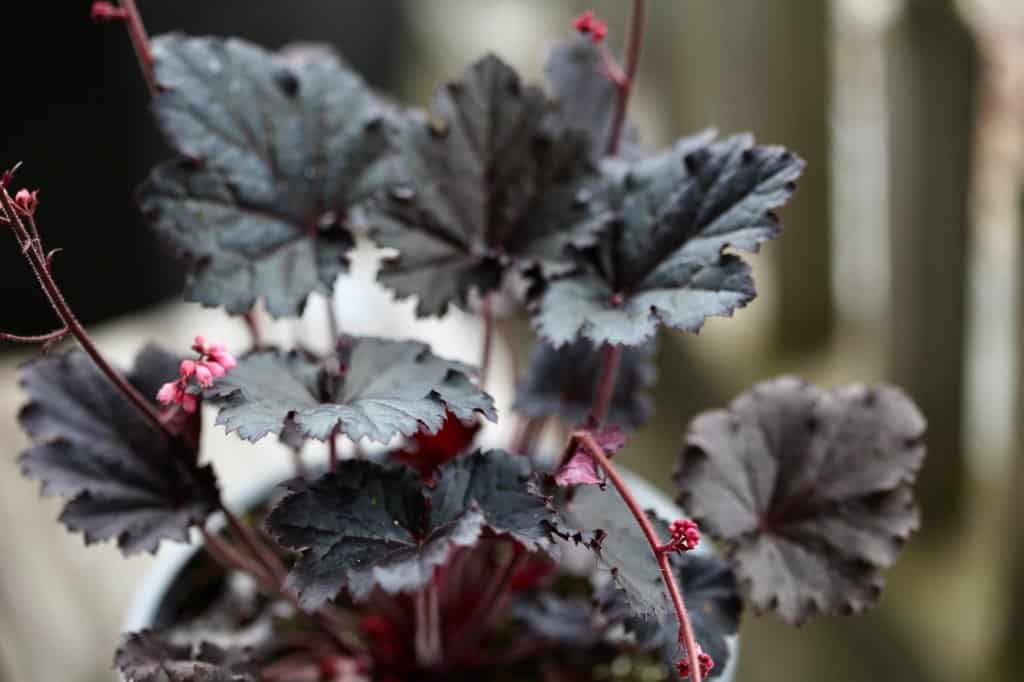
Have you ever tried to grow Coral bells in your garden? Be sure to leave a comment below to share your experience!
Other Posts You May Like:
PIN IT FOR LATER!
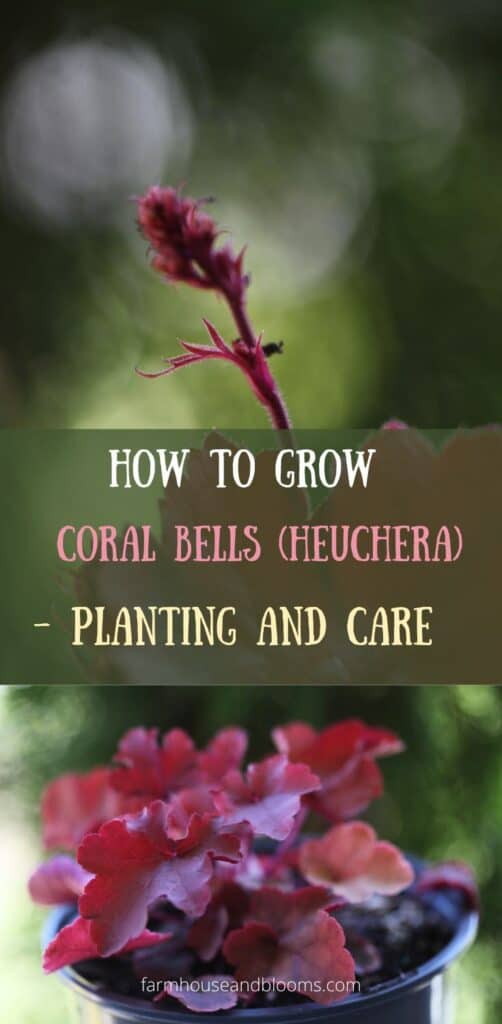
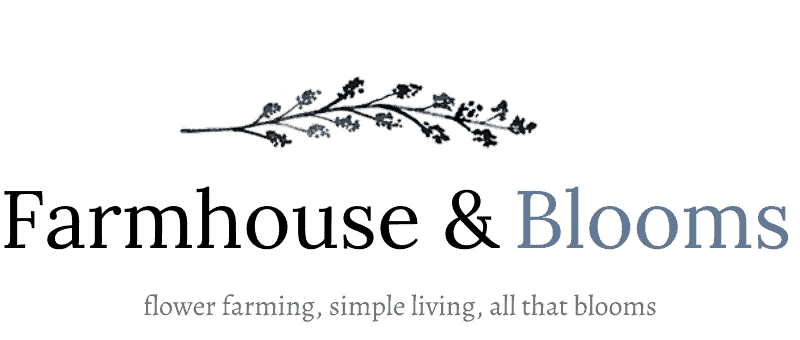

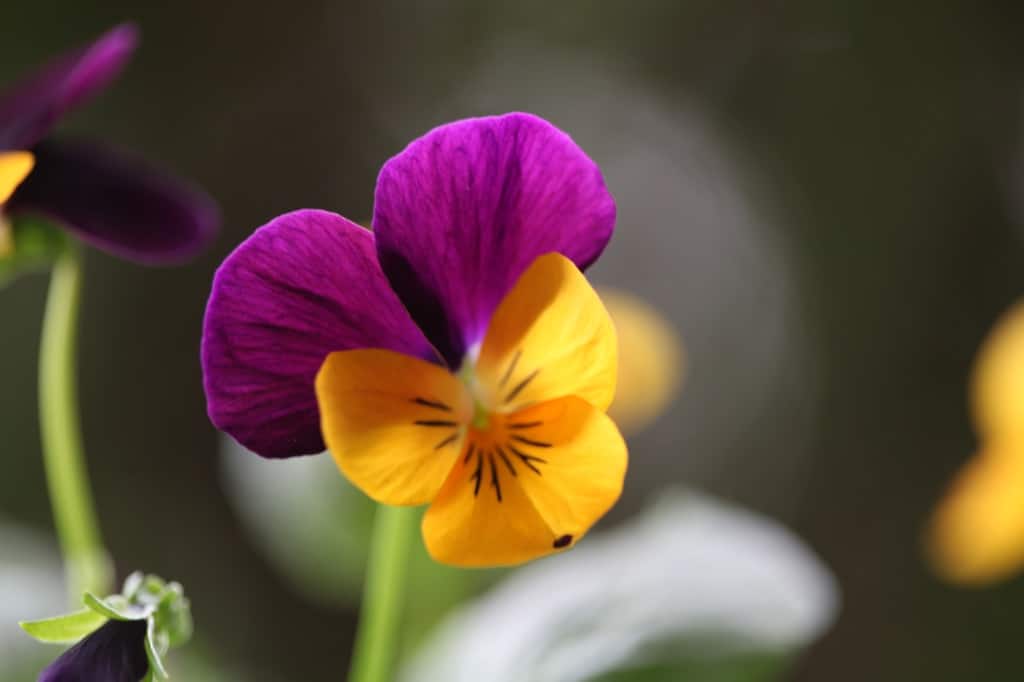

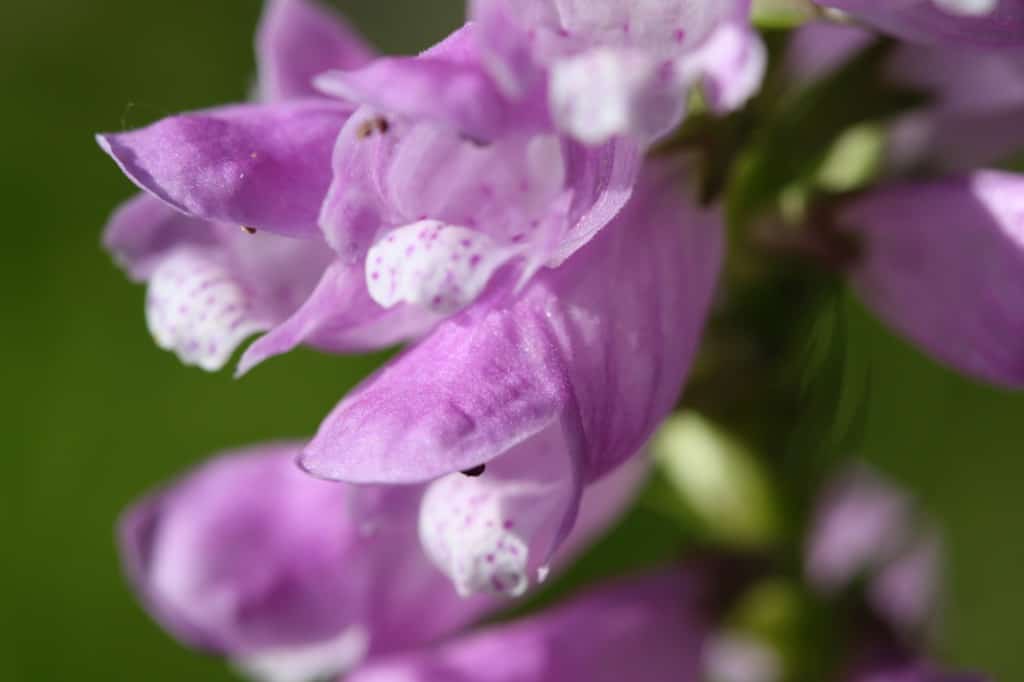
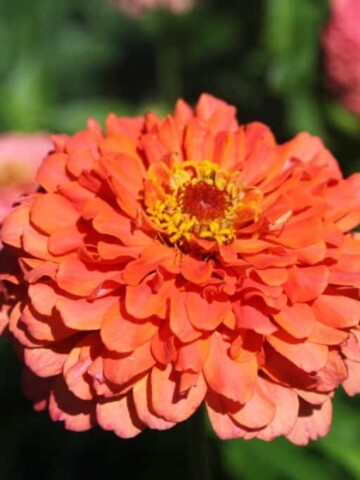
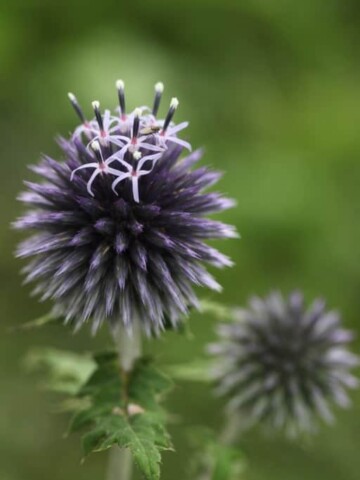
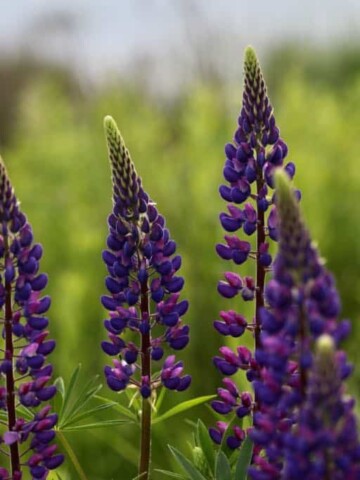
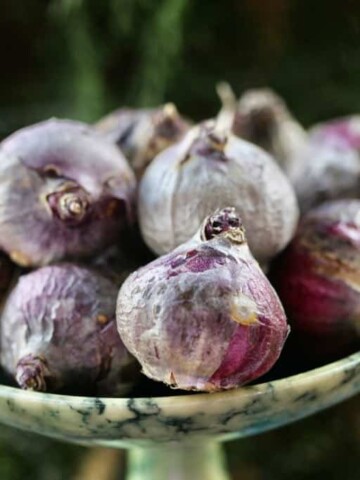
Leave a Reply